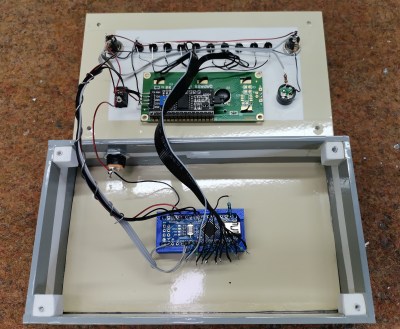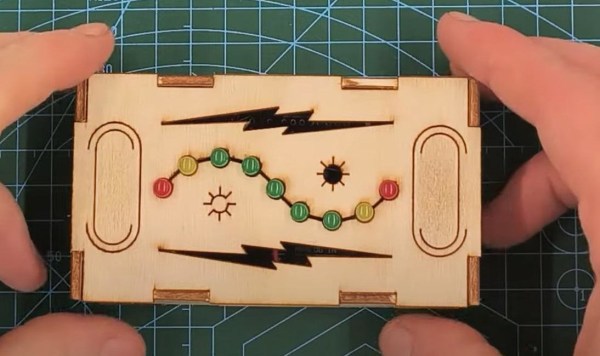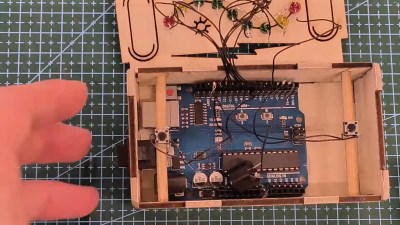As far as video games go, Pong is already about as simple as it gets. But if even two dimensions is a bit more than you’re looking to tackle, [mircemk] shows how you can distill the core gameplay of this iconic title to its absolute minimum using an Arduino and a row of LEDs.
 While [mircemk] brings their usual design aesthetic and flash to the project, this one could truly be done as a parts bin build. All you really need is a microcontroller with enough I/O pins (here, an Arduino Nano is used), a couple of buttons, and the aforementioned LEDs. A 16×2 LCD and a buzzer have been added to improve on the user interface a bit, but even that isn’t strictly required.
While [mircemk] brings their usual design aesthetic and flash to the project, this one could truly be done as a parts bin build. All you really need is a microcontroller with enough I/O pins (here, an Arduino Nano is used), a couple of buttons, and the aforementioned LEDs. A 16×2 LCD and a buzzer have been added to improve on the user interface a bit, but even that isn’t strictly required.
To play, each user holds their button and gets ready to hit it as soon as the LED closest to them lights up. Again, [mircemk] spruces this build up by offering both integrated buttons on the front panel of the game, as well as a pair of external “controllers” so you don’t have to crowd around the main unit. In this incarnation the score is shown on the LCD, but swapping that out for a pair of seven-segment LEDs could give the whole thing a bit more of a retro flair.
This isn’t the first time [mircemk] has tackled 1D Pong — if you can spring for addressable LEDs, you can pull the whole thing off with significantly less wiring.
Continue reading “Simple Version Of Pong Played On A Row Of LEDs”














